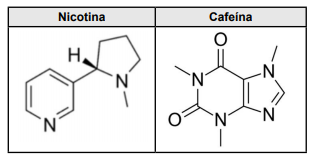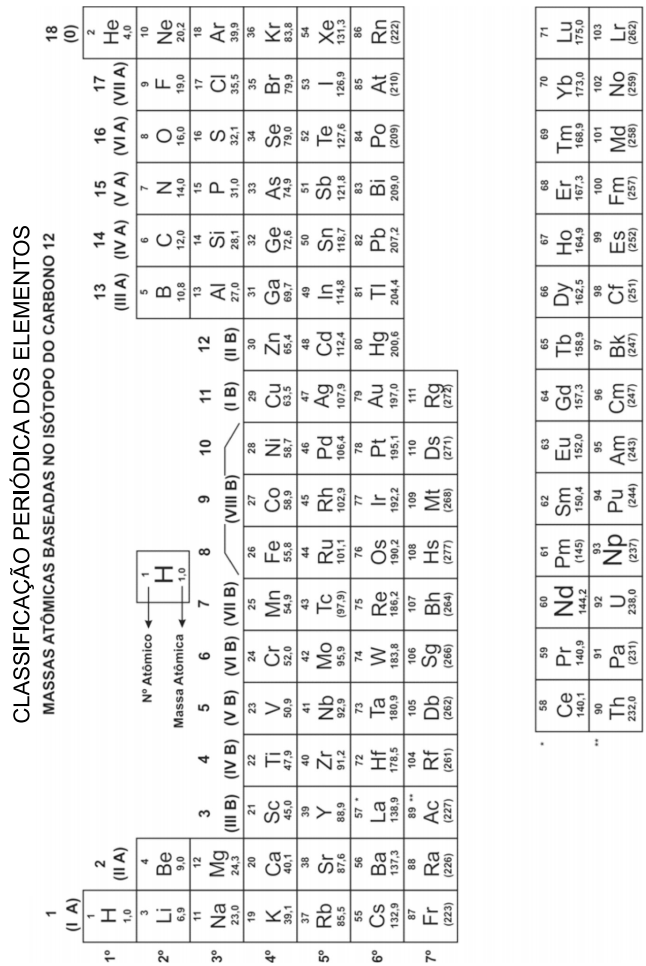Questões Militares
Para fundep (gestão de concursos)
Foram encontradas 874 questões
Resolva questões gratuitamente!
Junte-se a mais de 4 milhões de concurseiros!
Sobre a escolha de antidepressivos considerando seus potenciais efeitos colaterais, assinale a alternativa incorreta.
( ) As informações mais importantes são coletadas junto a fontes colaterais de informação, como familiares e profissionais que atenderam ao paciente no pré-hospitalar, e não do próprio paciente.
( ) É importante excluir a possibilidade do comportamento agitado se dever a condições médicas gerais, devendo-se, ainda, revisar tratamentos prévios e investigar a presença de intoxicação ou abstinência de substâncias psicoativas.
( ) Além da avaliação investigativa visando o diagnóstico, a estimativa do risco de violência também é um passo importante e considera, entre vários aspectos, a presença de fatores de risco para violência.
Assinale a sequência correta.
A principal hipótese diagnóstica é:
Sobre o tratamento indicado na intoxicação por álcool, assinale a alternativa incorreta.
I. O ambiente deve ser controlado, evitando-se qualquer tipo de estimulação sensorial possível.
II. Deve ser dada atenção ao ciclo sono-vigília, priorizando-se ambientes em que exista oscilação de intensidade da iluminação.
III. É importante fornecer ao paciente informações quanto à orientação e, nesse sentido, o uso de relógios é interessante.
Estão corretas as afirmativas
TEXT II
The most decorated firefighter in FDNY history
By Xavier Jackson
From the 1970s through the 1990s, there were thousands of fires raging across New York City. And all those fires had one thing in common: they were likely to have faced the likes of Jack Pritchard, the most decorated firefighter in New York City history.
From the beginning, Pritchard had proven himself a worthy member of the team, although his commanding officer was reportedly getting worried about his “near suicidal” tendencies when battling fires. For example, he found himself at the fire of a three-story building with a mentally-challenged child trapped on the third floor. He quickly charged in without oxygen and found the child, before he realized he was trapped. Left with no other exit — and by this point actually on fire himself — Pritchard smothered the child, and leaped to the first floor where he was doused with water and shipped off to the burn ward with the boy.
Pritchard’s next large inferno would be several years later, when he found himself rescuing fellow firefighters from a fire at Waldbaum’s Supermarket in Brooklyn. It was a fire he didn’t even have to go to, since his shift had actually already ended. But that wasn’t going to stop him.
It didn’t take long for him to distinguish himself again. On March 27, 1992, Engine 255 arrived at a fire to find an injured firefighter being pulled from the building after unsuccessfully attempting to rescue a 70-year-old man. Impatient and realizing he didn’t have to wait for orders as he was already in charge, Pritchard charged into the inferno, safety equipment be damned. He found the man, on fire, in his bed. Not hesitating, Pritchard extinguished the flames himself and dragged him out of the building.
He spent the next two months recovering from his burns in the hospital.
Then in July of 1998, Engine 255 pulled up to a fire where Jack Pritchard would perform the most famous heroics of his career. After learning there was an infant trapped in a crib on the fourth floor, Pritchard entered his Supermanmode and fearlessly leaped into the building to locate the baby.
After taking flames directly to his unprotected face, Pritchard located the baby, still alive. Unfortunately, flames were leaping above the crib, preventing him from lifting the baby to safety. Using his un-gloved hands — because safety was a word that still didn’t exist in his vocabulary — Pritchard grabbed the melting crib and began dragging it out of the room. Breathing carbon monoxide and severely burning his hand the whole way, Pritchard dragged the crib to his fellow firefighters where they assisted in rescuing the infant. For this he was awarded his second Bennett medal — the first was for the Walbaum’s fire — the highest award possible in the FDNY.
He finally retired from the department in 1999 with the rank of Battalion Chief, ending his career by simply stating “It’s been a real honor to be a firefighter.”
Available at: <https://www.firerescue1.com/fdny/
articles/the-most-decorated-firefighter-in-fdny-history-
jed6X9Qw0PqRnEbF/>. Accessed on: August 13, 2020
(Adapted).
TEXT II
The most decorated firefighter in FDNY history
By Xavier Jackson
From the 1970s through the 1990s, there were thousands of fires raging across New York City. And all those fires had one thing in common: they were likely to have faced the likes of Jack Pritchard, the most decorated firefighter in New York City history.
From the beginning, Pritchard had proven himself a worthy member of the team, although his commanding officer was reportedly getting worried about his “near suicidal” tendencies when battling fires. For example, he found himself at the fire of a three-story building with a mentally-challenged child trapped on the third floor. He quickly charged in without oxygen and found the child, before he realized he was trapped. Left with no other exit — and by this point actually on fire himself — Pritchard smothered the child, and leaped to the first floor where he was doused with water and shipped off to the burn ward with the boy.
Pritchard’s next large inferno would be several years later, when he found himself rescuing fellow firefighters from a fire at Waldbaum’s Supermarket in Brooklyn. It was a fire he didn’t even have to go to, since his shift had actually already ended. But that wasn’t going to stop him.
It didn’t take long for him to distinguish himself again. On March 27, 1992, Engine 255 arrived at a fire to find an injured firefighter being pulled from the building after unsuccessfully attempting to rescue a 70-year-old man. Impatient and realizing he didn’t have to wait for orders as he was already in charge, Pritchard charged into the inferno, safety equipment be damned. He found the man, on fire, in his bed. Not hesitating, Pritchard extinguished the flames himself and dragged him out of the building.
He spent the next two months recovering from his burns in the hospital.
Then in July of 1998, Engine 255 pulled up to a fire where Jack Pritchard would perform the most famous heroics of his career. After learning there was an infant trapped in a crib on the fourth floor, Pritchard entered his Supermanmode and fearlessly leaped into the building to locate the baby.
After taking flames directly to his unprotected face, Pritchard located the baby, still alive. Unfortunately, flames were leaping above the crib, preventing him from lifting the baby to safety. Using his un-gloved hands — because safety was a word that still didn’t exist in his vocabulary — Pritchard grabbed the melting crib and began dragging it out of the room. Breathing carbon monoxide and severely burning his hand the whole way, Pritchard dragged the crib to his fellow firefighters where they assisted in rescuing the infant. For this he was awarded his second Bennett medal — the first was for the Walbaum’s fire — the highest award possible in the FDNY.
He finally retired from the department in 1999 with the rank of Battalion Chief, ending his career by simply stating “It’s been a real honor to be a firefighter.”
Available at: <https://www.firerescue1.com/fdny/
articles/the-most-decorated-firefighter-in-fdny-history-
jed6X9Qw0PqRnEbF/>. Accessed on: August 13, 2020
(Adapted).
TEXT I
Top stories of 2019 | No. 1: Hero firefighter mourned
BERWICK, Maine — Firefighters and residents in Berwick and surrounding communities felt a deep sense of loss after the death of Fire Capt. Joel Barnes, who died shielding a fellow firefighter from flames during threestory apartment building fire March 1.
Barnes, 32, was hailed as a hero at his funeral for giving up his life to save his comrade.
The fire also displaced eight tenants in six apartment units. No tenants were injured. The National Institute for Occupational Safety and Health, a federal agency responsible for conducting research and making recommendations for the prevention of work-related injury and illness, ruled the building needed to be demolished. The institute inspects buildings whenever a firefighter is killed in the line of duty, according to Berwick Town Manager Stephen Eldridge.
Barnes had no chance to escape from the third floor of the 10 Bell St. apartment building fire, leading to his death from “probable hyperthermia and/or hypoxia,” according to a report released April 5. Dr. Christine James of the New Hampshire chief medical examiner’s office determined the cause of death and ruled the manner of death was accidental. Hyperthermia is defined as the condition of having a body temperature greatly above normal, while hypoxia is a condition in which the body or a region of the body is deprived of adequate oxygen supply at the tissue level.
Available at: <https://www.fosters.com/news/20191230/top-
stories-of-2019--no-1-hero-firefighter-mourned>.
Accessed on: August 11, 2020 (Adapted).
TEXT I
Top stories of 2019 | No. 1: Hero firefighter mourned
BERWICK, Maine — Firefighters and residents in Berwick and surrounding communities felt a deep sense of loss after the death of Fire Capt. Joel Barnes, who died shielding a fellow firefighter from flames during threestory apartment building fire March 1.
Barnes, 32, was hailed as a hero at his funeral for giving up his life to save his comrade.
The fire also displaced eight tenants in six apartment units. No tenants were injured. The National Institute for Occupational Safety and Health, a federal agency responsible for conducting research and making recommendations for the prevention of work-related injury and illness, ruled the building needed to be demolished. The institute inspects buildings whenever a firefighter is killed in the line of duty, according to Berwick Town Manager Stephen Eldridge.
Barnes had no chance to escape from the third floor of the 10 Bell St. apartment building fire, leading to his death from “probable hyperthermia and/or hypoxia,” according to a report released April 5. Dr. Christine James of the New Hampshire chief medical examiner’s office determined the cause of death and ruled the manner of death was accidental. Hyperthermia is defined as the condition of having a body temperature greatly above normal, while hypoxia is a condition in which the body or a region of the body is deprived of adequate oxygen supply at the tissue level.
Available at: <https://www.fosters.com/news/20191230/top-
stories-of-2019--no-1-hero-firefighter-mourned>.
Accessed on: August 11, 2020 (Adapted).
TEXT I
Top stories of 2019 | No. 1: Hero firefighter mourned
BERWICK, Maine — Firefighters and residents in Berwick and surrounding communities felt a deep sense of loss after the death of Fire Capt. Joel Barnes, who died shielding a fellow firefighter from flames during threestory apartment building fire March 1.
Barnes, 32, was hailed as a hero at his funeral for giving up his life to save his comrade.
The fire also displaced eight tenants in six apartment units. No tenants were injured. The National Institute for Occupational Safety and Health, a federal agency responsible for conducting research and making recommendations for the prevention of work-related injury and illness, ruled the building needed to be demolished. The institute inspects buildings whenever a firefighter is killed in the line of duty, according to Berwick Town Manager Stephen Eldridge.
Barnes had no chance to escape from the third floor of the 10 Bell St. apartment building fire, leading to his death from “probable hyperthermia and/or hypoxia,” according to a report released April 5. Dr. Christine James of the New Hampshire chief medical examiner’s office determined the cause of death and ruled the manner of death was accidental. Hyperthermia is defined as the condition of having a body temperature greatly above normal, while hypoxia is a condition in which the body or a region of the body is deprived of adequate oxygen supply at the tissue level.
Available at: <https://www.fosters.com/news/20191230/top-
stories-of-2019--no-1-hero-firefighter-mourned>.
Accessed on: August 11, 2020 (Adapted).
Durante um resgate em um edifício, bombeiros descem com um objeto na vertical pressionando-o contra a parede. Nessa descida, o objeto escorrega com velocidade constante.
Se a força F, que pressiona o objeto que desce contra a parede, forma um ângulo de 90º com ela, é correto afirmar que a força peso é

as mesmas condições anteriores, agora três pessoas farão a mesma força F, em um mesmo intervalo de tempo t, sob o mesmo bloco de massa m inicialmente em repouso.

Se na situação inicial a pessoa foi responsável por “entregar” ao bloco uma energia cinética E ao fazer uma força F sobre ele, na segunda situação em que três pessoas empurram o mesmo bloco fazendo a mesma força F, ao distribuir a energia cinética adquirida pelo bloco para as três pessoas, pode-se concluir que cada pessoa “entrega” ao bloco uma energia cinética de
“O compact disc (CD) é um disco de policarbonato transparente de 12 cm de diâmetro. Em uma de suas faces, existe uma fina camada de uma liga metálica na qual podem ser estampadas microscópicas depressões. As regiões com depressões e as regiões sem depressões representam em conjunto as informações por meio de um sistema binário. Esses dados são gravados a partir de 2 cm do centro do disco em uma trilha espiralada que se afasta com passo constante.
A leitura das informações é realizada utilizando-se um laser de baixa potência, que “lê” as depressões e as ausências de depressões do centro para a extremidade do disco. [...] Uma sequência de tais informações é decodificada pelo sistema e enviada para um alto-falante (no caso de sons) ou para uma tela de computador (no caso de imagens).”.

BÔAS, Newton Villas; DOCA, Ricardo Helou; BISCUOLA, Gualter José. Tópicos de Física 2. 19ª edição. São Paulo: Saraiva, 2012, p. 246.
O principal fenômeno ondulatório que permite o funcionamento da tecnologia citada é a
Gabriel comprou um dispositivo eletrônico que constava em sua descrição a seguinte especificação: “5V – 10W”. Porém, para fazer a ligação desse dispositivo, ele contava apenas com uma bateria de 9,0 V e alguns pedaços de fios.
Como não contava com um resistor, Gabriel resolveu improvisar utilizando um pedaço de um condutor de ferro, cuja área da secção reta é de 1,0 mm2 e resistividade elétrica de 1,0 x 10–7 Ω.m.
(Considere os demais fios do circuito e a bateria ideais.)
Para que o dispositivo seja ligado segundo suas especificações, o condutor de ferro deverá ter
Bombeiros de Brumadinho apresentam
concentração de alumínio e cobre no sangue
Quatro bombeiros que trabalham nas buscas de corpos das vítimas da tragédia de Brumadinho apresentaram concentração de metais alumínio e cobre em seus exames de sangue. Esses metais estão presentes no solo que foi contaminado por rejeitos de mineração. Especialistas destacam que a maioria das alterações no corpo por contaminação de alumínio são neurológicas. Já no caso da contaminação pelo cobre, o risco é do desenvolvimento de doenças hepáticas, que são doenças do fígado.
Disponível em: <https://www.brasildefato.com.br/2019/02/21/
bombeiros-de-brumadinho-ja-apresentam-alteracoes-
em-laboratoriais>. Acesso em: 5 ago. 2020 (Adaptação).
Doenças hepáticas afetam diretamente a saúde humana,
porque o fígado
Heróis de farda, policiais e bombeiros militares
até em nascimento de bebês
Ao se aproximar de uma aglomeração ao redor de um carro, o bombeiro percebeu que se tratava de uma mulher em trabalho de parto. “O bebê já estava nascendo, foram dois, os bebês eram gêmeos univitelinos”, disse.
Disponível em: <http://www.amazonas.am.gov.br/2019/06/
herois-de-farda-policiais-e-bombeiros-militares-ajudam-ate-em-nascimento-de-bebes/>.
Acesso em: 22 abr. 2020 (Adaptação).
Na reprodução humana,
Em uma operação de fiscalização, foram apreendidos animais e mudas de plantas do segundo maior bioma brasileiro, que apresenta grande biodiversidade e compreende uma área com elevado potencial hídrico.
O bioma citado no texto, com exemplo de animais e vegetais típicos da região, é:
Para fazer um resgate, os bombeiros foram avisados que passariam por uma lagoa conhecida popularmente pela ocorrência da “doença do caramujo” ou “doença da barriga d’água”.
Nesse resgate, os bombeiros não poderiam entrar na água porque
Durante um acidente, uma pessoa foi ferida por um objeto perfurocortante que atingiu o peitoral, alcançando uma das artérias do coração.
O acidente foi considerado

O Brasão de Armas do Brasil, também conhecido como Brasão da República, é um importante símbolo da República Federativa do Brasil. Ele é constituído de um escudo azul-celeste, apoiado sobre uma estrela de cinco pontas, disposta na forma da constelação do Cruzeiro do Sul. Ao seu redor, está uma coroa formada de um ramo de café frutificado e outro de fumo florido sobre um resplendor de ouro.
BRASIL. Presidência da República. Disponível em:
<http://www2.planalto.gov.br/mandatomicheltemer/conheca-a-
presidencia/acervo/simbolos-nacionais/brasao>.
Acesso em: 13 ago. 2020 (Adaptação).
Pela importância econômica para o Brasil, as folhas de café e de tabaco foram incorporadas no Brasão da República. Nas folhas de tabaco sempre se encontra a nicotina, uma substância carcinogênica e nas folhas de café, a cafeína, uma substância estimulante do sistema nervoso central. A estrutura química da nicotina e da cafeína são representadas a seguir.

Sobre algumas propriedades químicas das estruturas,
é correto afirmar que
